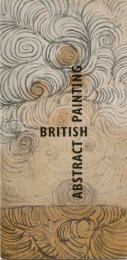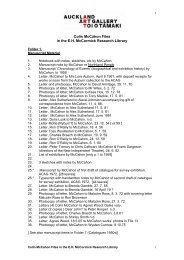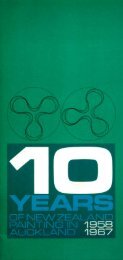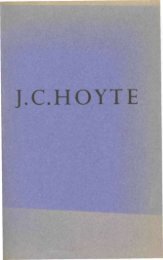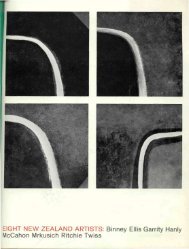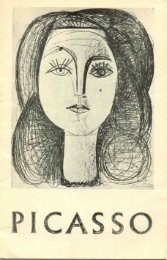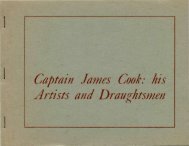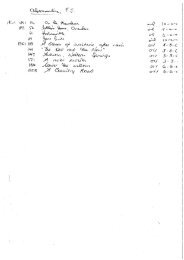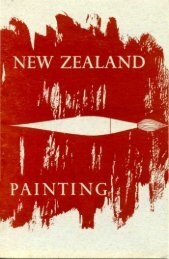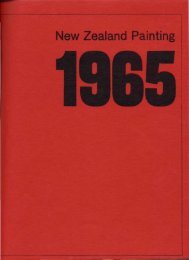You also want an ePaper? Increase the reach of your titles
YUMPU automatically turns print PDFs into web optimized ePapers that Google loves.
Paintingsthat the picture holds it. The painting should be rigidand not able to flex.It is advisable to build up the back of the frame sothat it is as deep as the painting and the reverse is protected.The frame should project out past the picture planeso that when laid face down, the painted surface is not incontact with the table and is therefore protected fromany abrasions or dirt.The Rebate—or ‘rabbet’ of the frame is the lip onwhich the front of the painting rests. It should beslightly larger than the picture to allow for expansioneither from environmental changes or from keying out ofthe stretcher.To prevent the painting slipping around in the frameand to hold it in position, a material such as archivalboard, balsa-wood or corks can be wedged between theframe and the painting. These can be secured in theframe with gummed linen cloth tape or double-sidedtape.Measures should be taken to ensure that the frontedge of the picture is not abraded by the rebate. Itshould be sanded down so that it is smooth and flat andthen a protective material attached. Felt strips, velvetribbon, or archival blotter can be adhered to the rebatewith double-sided tape or PVA (allowing 8 hours to dryproperly). An alternative is to attach strips of wood,metal or plastic to the edge of the picture so that theyprotrude beyond its face and keep it away from therebate.Glazing—with glass or acrylic sheeting is useful foradded protection. It is especially good for pictures thathave delicate surfaces or are to be hung in areas wherethey might get dirty or be touched. Museums often glazepaintings that are to go on loan.If a painting is to be glazed, there should be a spaceof about 5 mm between the face of the picture and theglazing material. If the two layers touch, the paint couldadhere to the glass/acrylic and be pulled off. A stripmade of wood or balsa-wood can be used to separate thepainting and glazing and this should have a soft materialover it, such as felt or velvet, to protect the picture. Itmay be necessary to paint the inside edge of the stripblack so that it is not visible from the front.Acrylic sheeting is often more practical to use thanglass because of its resistance to shattering which isextremely important for travelling exhibitions. Acrylicalso has better temperature insulating properties andsome varieties filter out more ultraviolet light. Glass ismuch harder to scratch, doesn’t attract dust to the samedegree, has low thermal expansion and comes in lowreflectinggrades (such as Image Perfect and Tru Vue).Both acrylic and glass filter out some ultravioletlight, but enough will get through to damage paintings.The high ultraviolet filtering varieties can be useful forprotecting delicate artworks but as some ultraviolet willstill get through as well as other damaging wavelengthsin the light spectrum, it is safest to keep within recommendedlight levels and exposure times.Securing—the picture should be properly securedin its frame. Nails should never be used as the hammeringcan cause damage through excess vibration and theycan inadvertently go through the painting. Staplesshould not be driven into the painting to hold it in theframe as they can cause damage. Both nails and staplesare extremely difficult to remove.Metal brackets or mirror-plates which are screwedto the frame hold the painting in by pressure alone.They can be made of aluminium, brass, galvanised steelor any material that is strong enough and will not corrode.Every painting should have at least one bracketon each side (more if large) to ensure that it is securelyheld in the frame.Hanging—it is preferable to hang a painting from itsframe. The stretcher can be damaged by hanging devicesand if it is supporting the weight of a heavy frame it candistort. It is advisable, especially with large works, tohave two points of contact with the wall for better security.Marine cleats (JC1) are very good, as they areextremely strong and have a self-locking mechanism.34



